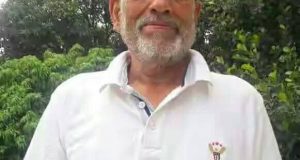DAINIK NATION BUREAU
Among the series of defaults by various companies in 2018, IL&FS was by far the biggest. Consider these numbers: IL&FS’ total debt stood at Rs 91,000 crore, out of which Rs 57,000 crore was from public sector lenders. The amount due to banks is over 10 percent of the net worth of all public sector banks in India.
The IL&FS group owes banks Rs 53,000 crore according to the company’s 2017-18 balance sheet. This amounts to slightly over 16 percent of the banking sector’s total exposure to non-banking financial companies (NBFCs), which stands at around Rs 3.3 lakh crore.
The rot in the system took years to build. The complex structure of IL&FS made it difficult for regulators, rating agencies and auditors to highlight the weakness in the consolidated balance sheet. Here is a timeline of events since the default first came to light.
June 2018: IL&FS Transportation Networks (ITNL) was the first domino to fall when it delayed repayment of Rs 450 crore.
PSUs’ contribution to central exchequer fell 3% to Rs 3.5 lakh crore in FY’18 re of inter-corporate deposits (ICD) from Small Industries Development Bank of India (SIDBI). The default led to downgrades by rating agencies ICRA and CARE.
July 21, 2018: The first real sign of trouble was visible when the IL&FS group’s founder and chairman Ravi Parthasarathy stepped down citing health grounds.
August 28, 2018: The financial services arm of the group – IL&FS Financial Services – defaults on its commercial paper but repays it within days.
September 4, 2018: IL&FS defaults on a Rs 1,000 crore short-term loan to SIDBI leading to further downgrades on almost all debt instruments issued by IL&FS.
September 12, 2018: IL&FS tries to pacify its employees saying that the defaults are because the company has not received Rs 16,000 crore from various government agencies. In order to mitigate the situation, the company was trying to raise money through the sale of non-strategic assets, a rights issue and corporate debt, it said.
September 15, 2018: The government appoints former LIC chairman SB Mathur as IL&FS group chairman. The market regulator says that it is monitoring the situation. Contagion spreads to mutual funds and the debt market.
September 21, 2018: DSP Mutual fund’s sale of Dewan Housing Finance (DHFL) commercial papers at a high yield triggers a panic in equity and bond markets. The BSE Sensex crashes by 1,500 points as questions are asked about the sustainability of NBFCs’ business model of financing long-term lending by short-term borrowing.
September 21, 2018: In the second big resignation in the matter of a couple of months, Ramesh C Bawa, MD and CEO of IL&FS Financial Services, resigns.
September 24, 2018: IL&FS begins to face the heat from its lenders. SIDBI threatens to file a case at the NCLT for non-repayment. The infrastructure financing group loses access to fundraising through the commercial paper market for up to six months from the date of repayment of this obligation. The IL&FS board approaches NCLT to work out an arrangement with shareholders, creditors, and the board of directors.
September 28, 2018: The RBI meets top shareholders and raises concern on the crisis
September 29, 2018: At its Annual General Meeting (AGM), IL&FS passes a motion to raise Rs 4,500 crore through a rights issue and raises the borrowing limit to Rs 35,000 crore from Rs 25,000 crore. The company appoints Alvarez and Marsal as a specialist agency to execute the debt restructuring plan.
September 30, 2018: The IL&FS crisis sparks huge outflows in liquid funds in September. Mutual funds are major investors in NBFC commercial papers and there are fears of contagion as shadow banks found it difficult to raise funding.
October 1, 2018: An NCLT judgment allows the government to assume control and institute a new board under the chairmanship of Uday Kotak and five other new board members. The government tells NCLT that the collapse of IL&FS may lead to a collapse of many mutual fund companies.
October 31, 2018: The Uday Kotak-led board submitted a revival plan for the beleaguered company. The report, apart from preparing a road map for reviving IL&FS, also highlighted that the mess was a result of greed, mismanagement, and deliberate oversight.
December 3, 2018: In its second report the newly formed board informs the NCLT that it is planning to focus on vertical as well as asset-level resolution. That is because finding a solution for the group as a whole with a debt of about Rs 91,000 crore was not possible. The resolution would involve significant capital infusion from credible as well as financially strong investors, something not feasible in the current situation, the report said.
December 4, 2018: The Institute of Chartered Accountants (ICAI) finds the statutory auditors of IL&FS and two of its subsidiaries, IL&FS Transportation Networks Ltd (ITNL) and IL&FS Financial Services Ltd (IFIN) to be “prima facie guilty” of professional misconduct. The names listed by the ICAI include three top-notch audit firms – Deloitte Haskins & Sells, BSR & Associates LLP, and SR Batliboi.moneycontrol.com
 Dainik Nation News Portal
Dainik Nation News Portal




